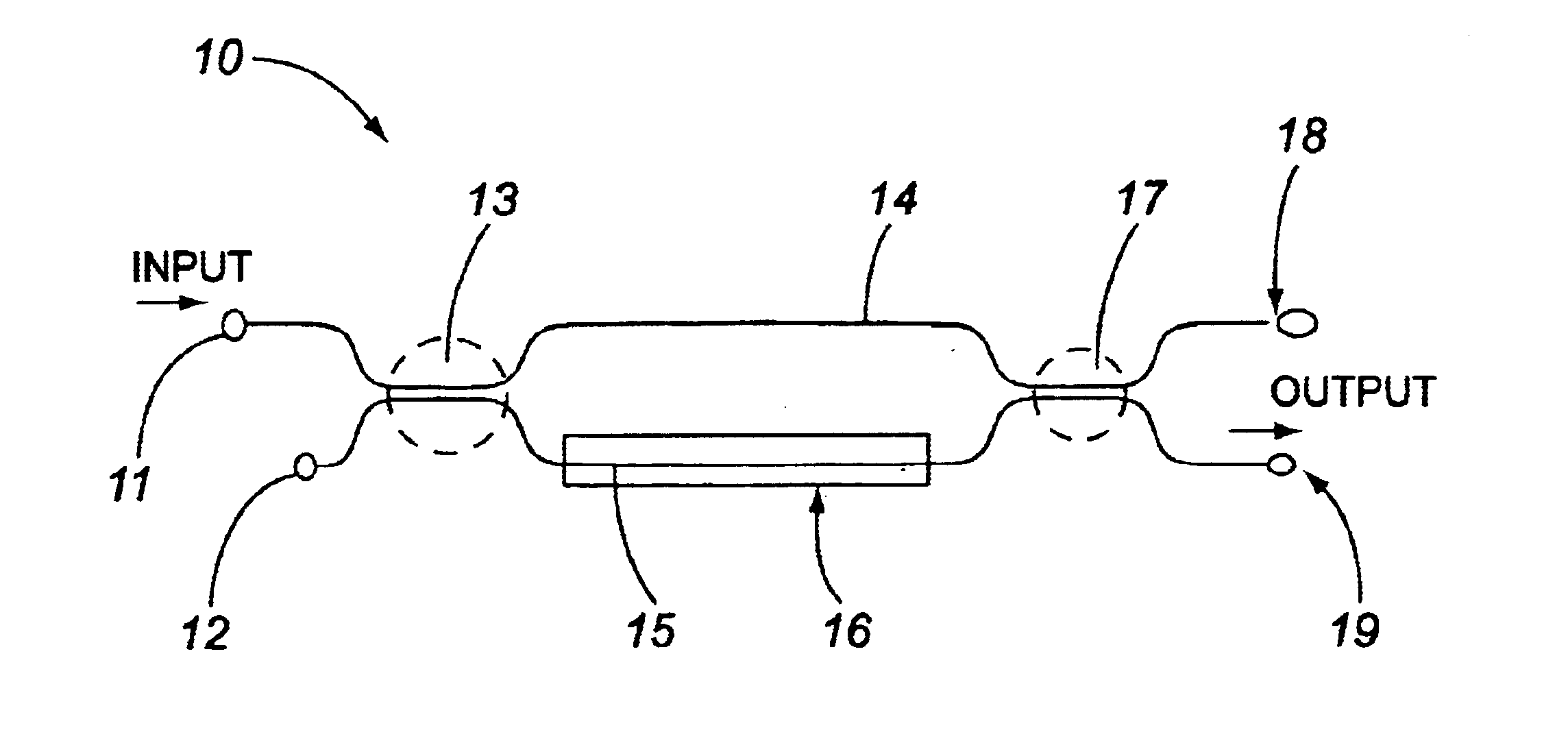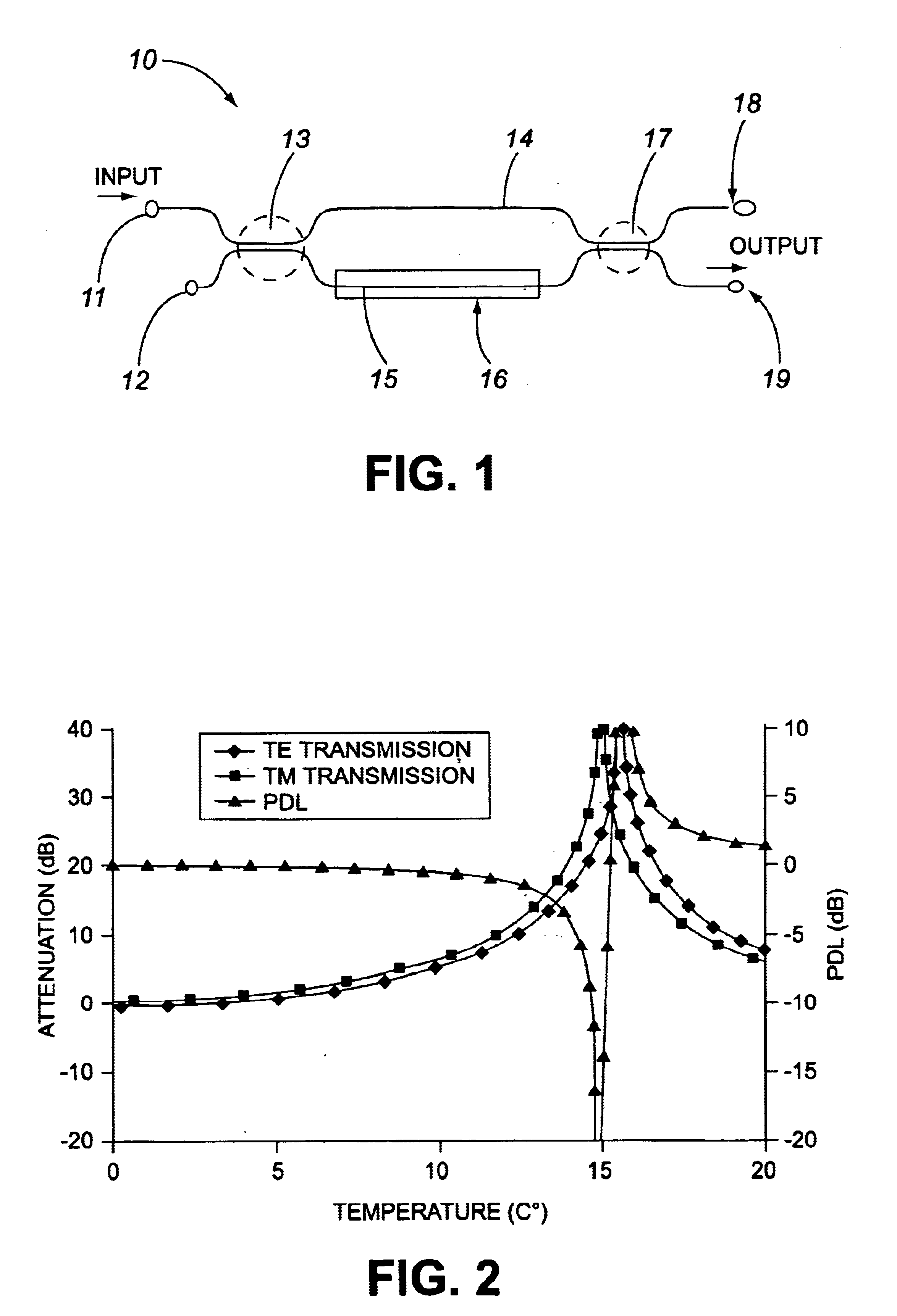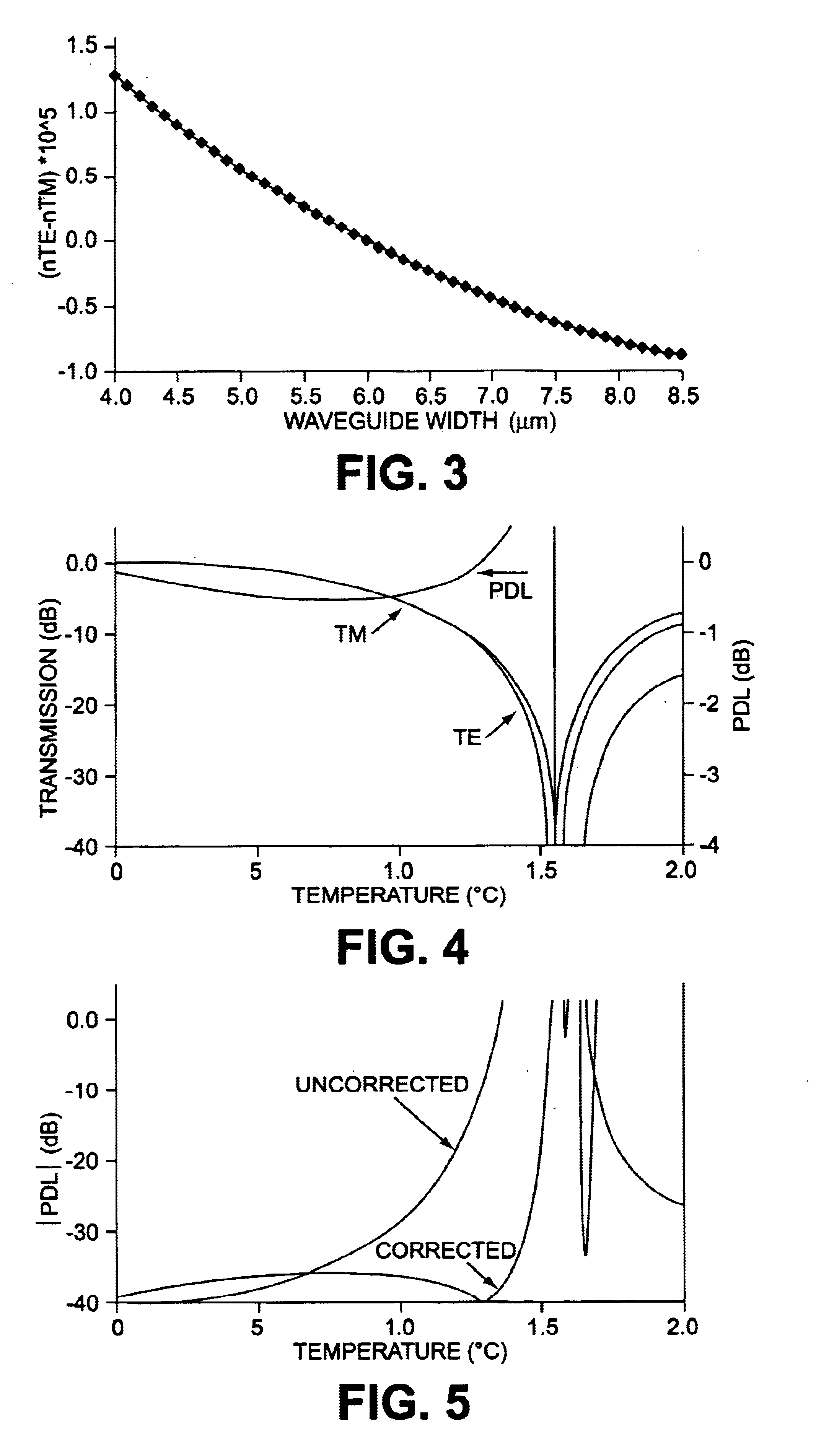Birefringence compensated integrated optical switching or modulation device
a planar waveguide and integrated technology, applied in the direction of optical waveguide light guide, instruments, optics, etc., can solve the problems of non-linear increase in pdl and polarization dependent loss, and achieve the effect of reducing the width of the heated arm, and reducing the pdl
- Summary
- Abstract
- Description
- Claims
- Application Information
AI Technical Summary
Benefits of technology
Problems solved by technology
Method used
Image
Examples
Embodiment Construction
As a first example, one could compensate the 1.7.times.10.sup.-5 birefringence assumed in FIG. 2 by decreasing the waveguide width of the heated arm from 6 microns to 3.6 microns. This slight birefringence would again cause some PDL in the on state, but allow for very high contrast in the off state. FIG. 4 shows the calculated transmission of the two polarization states in such a compensated device. The two nulls overlap substantially, resulting in an increase in the maximum contrast ratio (for unpolarized light) from 20 dB to better than 30 dB. The PDL is less than 0.5 dB nearly everywhere, except for close to the nulls. It is important to note, as shown in FIG. 5, that even though the PDL has increased in the corrected device at zero bias, it is still lower than the uncorrected device nearly everywhere except for close to zero bias.
As a second example, one could compensate part of the birefringence assumed in FIG. 2 by increasing the waveguide width of the non-heated arm from 6 mi...
PUM
| Property | Measurement | Unit |
|---|---|---|
| width | aaaaa | aaaaa |
| width | aaaaa | aaaaa |
| width | aaaaa | aaaaa |
Abstract
Description
Claims
Application Information
 Login to View More
Login to View More - R&D
- Intellectual Property
- Life Sciences
- Materials
- Tech Scout
- Unparalleled Data Quality
- Higher Quality Content
- 60% Fewer Hallucinations
Browse by: Latest US Patents, China's latest patents, Technical Efficacy Thesaurus, Application Domain, Technology Topic, Popular Technical Reports.
© 2025 PatSnap. All rights reserved.Legal|Privacy policy|Modern Slavery Act Transparency Statement|Sitemap|About US| Contact US: help@patsnap.com



